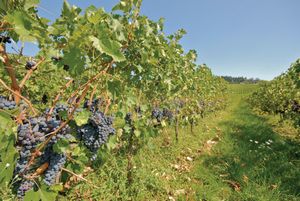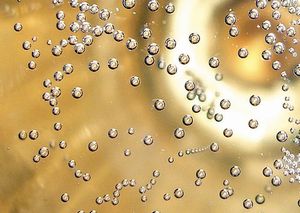Less than one-half of one percent of Italy’s wine is produced in Liguria. Some may say that this beautiful coastal region is mainly tourist country—with the ever-popular Cinque Terre to explore—not wine country. And that wine produced there is rather pricey. So, very little of Liguria’s wine travels outside its borders, whether to the rest of Italy or abroad.
Most of the vineyards are small, and many of the winemakers are part-time and from families who have worked this land for generations. Not only is the bulk of the land steep and mountainous, but the soil is generally poor. The vines grow on terraces, and olive groves outnumber vineyards about five to one. A special feature is the large number of fig trees in the vineyards: they are there to provide shelter for the workers from the hot sun.
Naturally, in these conditions, pruning the vines and gathering the grapes is done entirely by hand. In the old days, the local fishing boats (called gozzi) would wait below the vineyards for baskets of grapes to be lowered to them by a rope and pulley system. Now, in most cases, the baskets move up and down the slopes on tiny monorails.
Liguria is shaped like a half moon, with its capital, Genoa, about midway along the arch. The area west of Genoa, toward France is called the Ponente; the eastern part is called the Levante. The southernmost part of each is where the production of red wine is concentrated, though the vast majority of wines produced in Liguria are whites. (If you really want to try a red from the region, look for wines made with the rossese grape, grown around Dolceacua, and the opremeasco, the local name for dolcetto.)
Another unusual wine of the region, said by some to be Italy’s rarest, is the Sciacchetrá. This is a sweet wine that can carry a punch, with an alcohol rating of 18 percent. While it takes about 10 kilos of grapes to yield seven litres of other local wines, 10 kilos of the dried grapes used for making this particular wine only produce about 1.5 liters.
Until fairly recently, you could find around 100 grape types being grown in the region and used to produced some 85 different wines. Producers are now putting more emphasis on quality and modernizing their production. This has resulted in the production of fewer but better wines. Only about 12 percent of Liguria’s wine is rated under Italian law (DOCG, DOC, IGT), and 80 percent of that is white. The stars of the whites are made from vermentino and pigato grapes. Both make delightful, light white wines, ideal for enjoying with the local cuisine. The pigato is found more in the western area, around Albenga—which has a pigato festival in early August. Pigato is likely a mutation of a malvasia grape, as is vermentino.
The Vermentino wines of Sardinia are better known, but the ones being made today in Liguria are soft, round, and fruity―lovely choices for a summer evening.
So the question remains, which wines to choose? For 20 years, the authority on Italian wines has been Gambero Rosso. Its 2007 wine guide gives only one wine in Liguria the coveted ‘three glasses’ prize: Riviera Ligure di Ponente Pigato U Baccan 2004, produced by the Agenzia Agricola Bruna. The winery is just outside Ranzo, a small town a few miles inland from Albenga. With a little planning, you can make a lovely day trip of wine and food, going from Savona to Alassio or from Bordighera inland to Apricale and Dolceacqua, finishing in Ventimiglia in western Liguria, near the French border.
If the Levante, or eastern side, of Liguria is more appealing, make your way to Castelnuovo Magra to check out the Enoteca Pubblica della Liguria e della Lungiana, found in the Civic Palace. In the vaulted cellars of an eigthteenth-century palace, you will find the wines of the Colli del Candia area and all of Ligura to try and to buy. A visit there is also a great way to get out of the hot afternoon sun! Two wineries worth noting in the surroundings of Castelnuovo Magra are Ottaviano Lambruschi, a family-run business whose Vermentinos are well regarded, and Il Torchio, which has six guest rooms and meals featuring local products and the agency’s wines.
Liguria may not make the best wines in Italy, but its history, food, and sea views more than make up for it—and the wines are getting better each year!








